Mass Effect Starter Guide To: The Milky Way Races
Nov 18, 2016 14:56:48 GMT
Tarkus, cryptic137, and 1 more like this
Post by TheGodlyFist on Nov 18, 2016 14:56:48 GMT
With the up and coming Mass Effect: Andromeda, I will be creating a basic guide to the relevant races of the Mass Effect series. I am sorry if there is a topic similar to this somewhere, but I think this will be helpful to those new to the series and for those who just want a refresher. I WILL UPDATE THROUGHOUT THE DAY!
Humans:
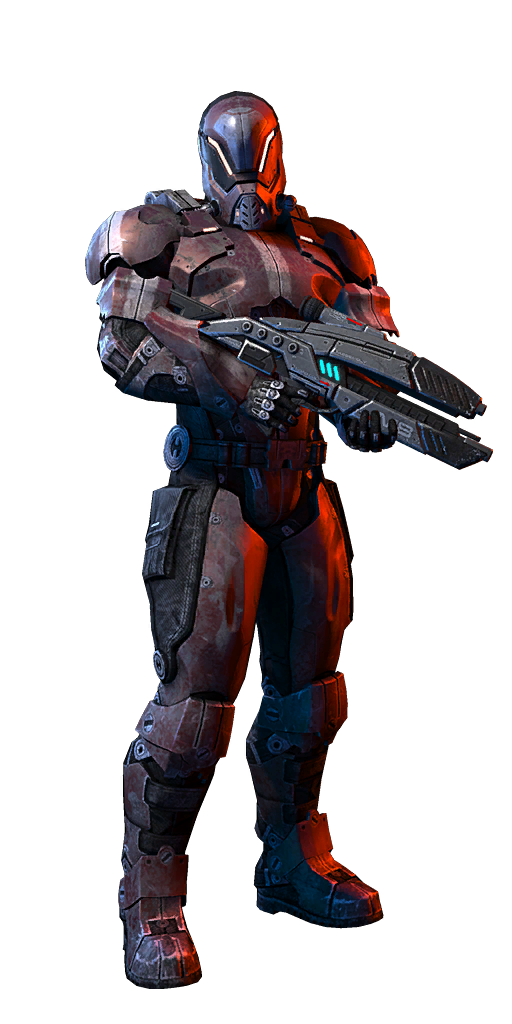
Beginning-
From the planet Earth, humans are the newest sentient species to enter the galactic stage and are rapidly expanding and developing their technology. They discovered a Prothean data cache on Mars in 2148, and the mass relay networks shortly thereafter.

Biology-
Humans have a fairly robust physiology. Their size and proportions give an average appearance of the galactic community. In comparison to the Council races, humans are roughly physically comparable with turians, and less agile than asari. Humans on average are stronger than salarians but not as fast. Humans can be compared similarly to other Milky Way races, being stronger in some areas and weaker in others. Like most organic races, humans are also capable of producing biotic individuals. Human biotics do not show as much inate control other them as the asari, but can reach impressive levels of pure biotic power. Most cases of biotics in humans are the result of pre-natal exposure to element zero, which carries a high risk of medical complications. However there are cases where humans are given biotic potential at older ages. These cases are rare though. Humans can live to about 150 years with their physical primes lasting well into their 90's, and recent medical advances have eradicated almost all known diseases that afflict them. Since humans only emerged on the galactic stage within the last thirty years, it is highly likely that the introduction of new technology into their society will greatly increase their average lifespan. Humans reach physical maturity at approximately eighteen years of age, at which point they have usually finished their academic education and either directly enter the workforce or begin training for a profession. Humans have far greater genetic diversity compared to other species, allowing them to adapt to a variety of worlds and situations. This also makes human genetic material useful in biological experiments, as a control group. Despite the substantial genetic diversity of humans, certain physical traits have been becoming more rare ever since the 19th and 20th centuries, when the mixing of different Earth ethnicities, due to social progression and acceptance, became more commonplace. To this end, with the merging of genetics, certain traits have declined in frequency. Recessive physical traits like blonde and red hair, as well as blue and green eyes, are even less common in the 22nd century.

History-
Human space exploration began in earnest in the late 21st century. In 2069 CE, Armstrong Outpost in Shackleton Crater on Luna was founded as humanity's first extraterrestrial settlement. In 2103, the European Space Agency established Lowell City in Eos Chasma on Mars, paving the way for additional settlements and scientific outposts throughout Sol, such as Gagarin Station near Pluto, which was under construction by 2142. In the early years, however, some were dissatisfied with the pace of official exploration, leading to a series of private ventures. In 2070, billionaire Victor Manswell began funding his own extrasolar colonization endeavor. The Manswell Expedition, as it became known, successfully launched five years later with 300 cryogenically-frozen colonists bound for the Alpha Centauri system, but communications with the expedition's ship were soon lost and the colonists classified as missing. The pre-FTL expedition was forgotten until 2186, when the colonists were discovered alive and well on a planet in Alpha Centauri by an asari exploration team.

Discovery of Mass Effect Physics-
In 2148, human explorers on Mars uncovered a long-ruined Prothean observation post, with a surviving data cache that proved Protheans had studied Cro-Magnon humans millennia ago. While religions tried to assimilate this discovery into their doctrine, a global rush began to decipher the petabytes of data from the outpost. Discovering information on a mass relay orbiting Pluto, explorers managed to open the Charon Relay and discovered it led to Arcturus. With the help of the fledgling Systems Alliance, humans expanded to other systems, opening any mass relays they could find. They then adapted this technology to upgrade their own.
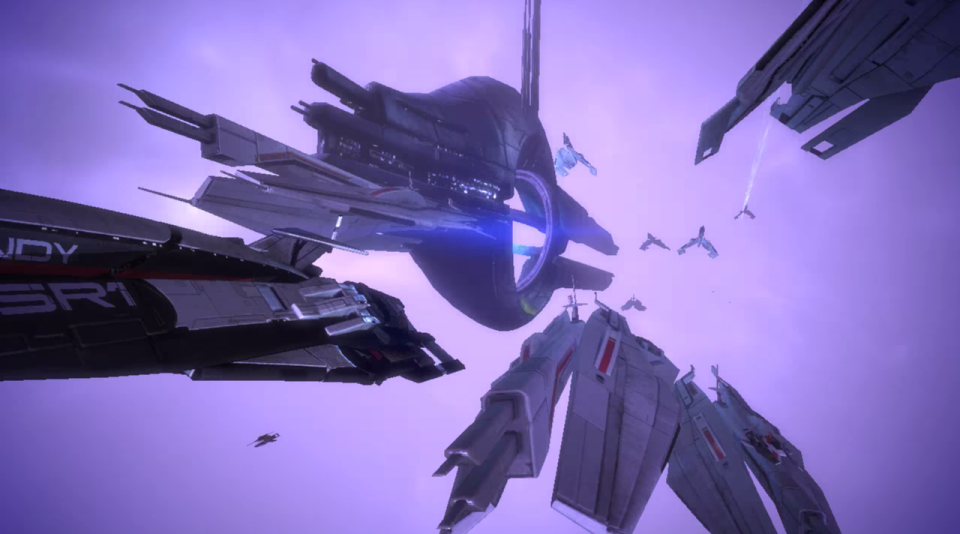
The First Contact War and Expansion-
Humans first came to the attention of the galactic community after a brief but intense conflict with the turians, known by humans as the First Contact War, begun in 2157. The conflict began when the turians attacked a human fleet attempting to activate a dormant mass relay (illegal under Council law) and then occupied the human colony of Shanxi. Led by Admiral Kastanie Drescher, the Second Fleet then launched a massive counter-attack, which caught the turians by surprise and expelled them from Shanxi. The conflict caught the attention of the Citadel Council, which wasted no time brokering a peace, thus introducing humans to the galactic community. As a consequence of the Alliance's swift and decisive action during the First Contact War, the Alliance became the representative and supranational governing body of humanity. Since then, humans have rapidly risen in prominence, but it was not until the battle against sovereign that they rose to galactic power. In 2165, humanity was granted an embassy on the Citadel in recognition of their growing power and influence in the galactic community. The timing of this achievement, less than a decade after first contact, caused some friction with other Citadel races who had waited decades for such recognition. Turian relations with humans have been troubled ever since. Humanity continued to expand to unclaimed star systems on the edge of Citadel space, which eventually led to competition with the batarians, and their eventual capture by the collectors. When the batarians tried and failed to convince the Council to declare the Skyllian Verge "a zone of batarian interest", they closed their embassy and withdrew from Citadel space. Viewing humans as the cause of their fall from grace, batarians frequently came into conflict with human colonies, especially batarian slavers. Tensions between humans and batarians persist for decades.
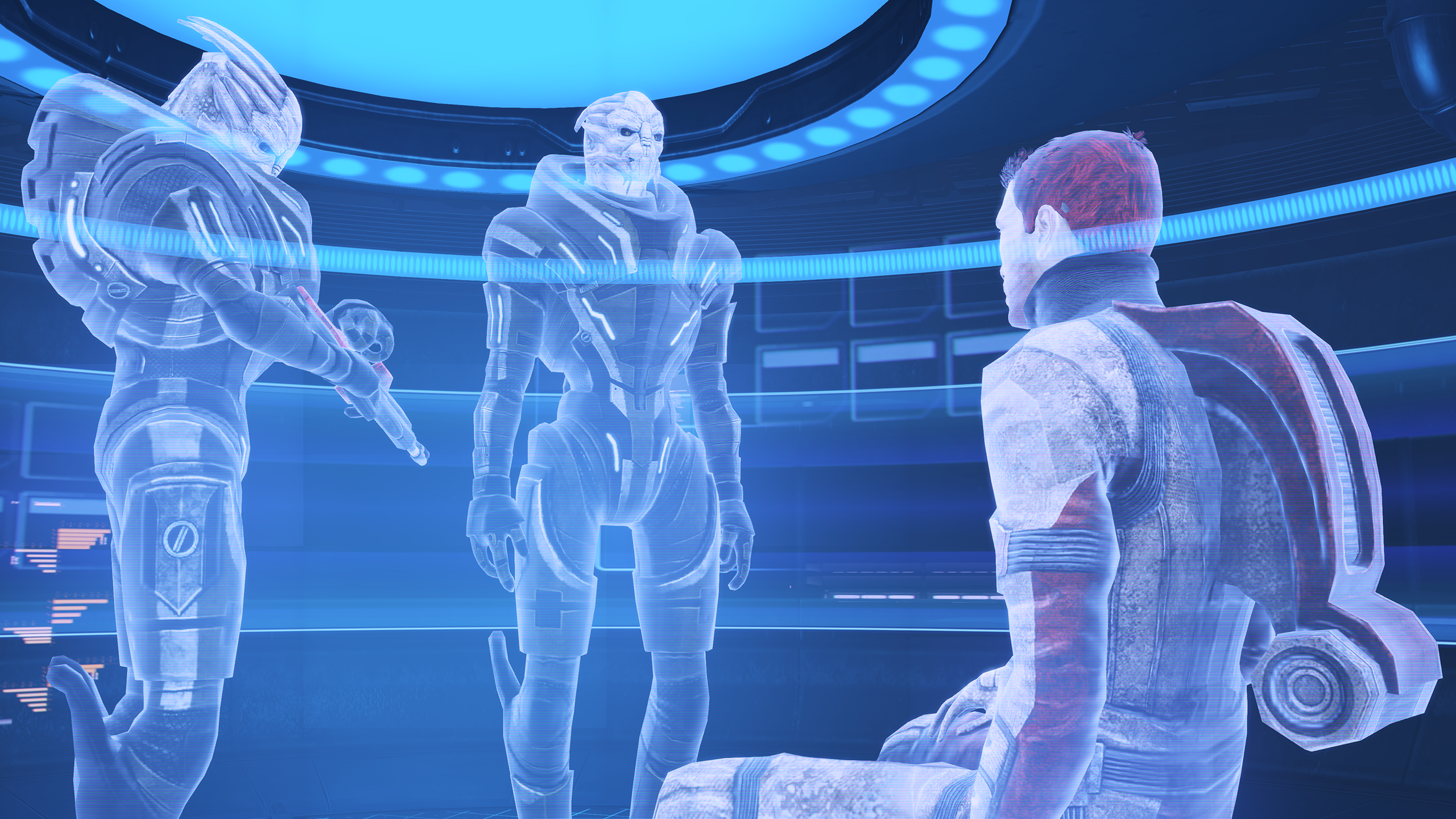
The Eden Prime War-
Humans were caught off-guard by the geth attack on Eden Prime, humanity's most prosperous colony, in 2183. Systems Alliance forces and the legendary Commander Shepard were involved in several operations against geth incursions into Alliance territory. The conflict between the Systems Alliance and geth later became known as the Eden Prime War, and culminated in the Battle of the Citadel, where a massive invasion fleet led by the flagship Sovereign tore through Citadel defenses. With the timely aid of the Alliance's Fifth Fleet, the geth were defeated. Depending on Commander Shepard's actions, the Council is saved and the Systems Alliance granted a Council seat, or the Council perishes and the Alliance forms a new Council. Thanks to their efforts in the Battle of the Citadel, humanity rises to a new level of prominence in the galaxy.
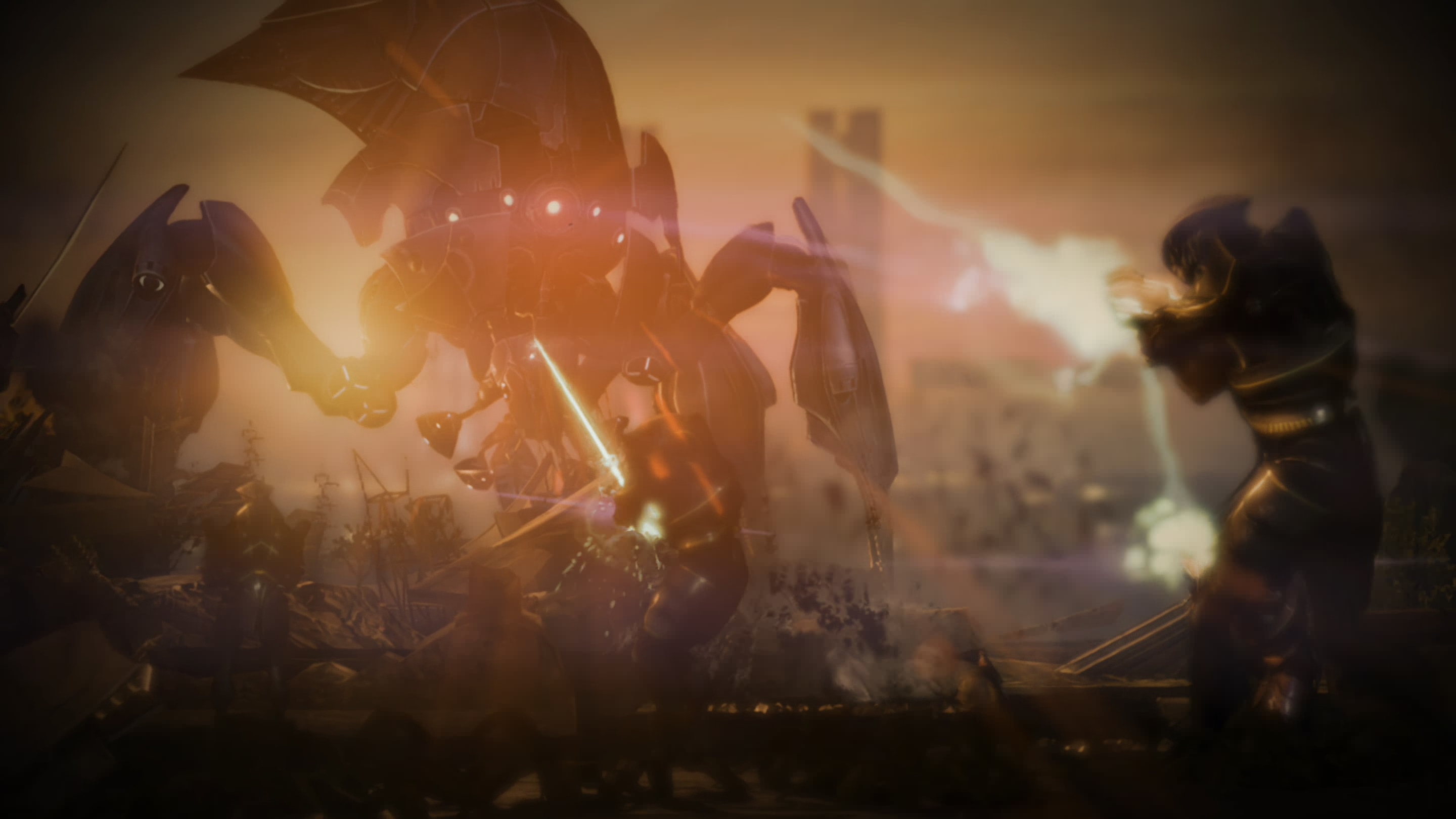
Vanishing Colonies-
Less than two years after the Battle of the Citadel, contact with some human colonies in the Terminus Systems is lost. Investigations reveal that the colonies' inhabitants have completely disappeared, with no trace of what happened to them. The Systems Alliance does little to intervene; with no explanation for the disappearances, the Alliance is unable to prevent further incidents. Humans on fringe colony worlds perceive the lack of action as an unwillingness to aid them, and begin to harbor resentment against the Alliance. The Alliance tries to rebuild trust through goodwill efforts, such as providing Horizon with new anti-starship defense turrents and some alliance personnel to watch over them. It is eventually discovered by Commander Shepard that the collectors were responsible.

The Reaper War-
In 2186, the Reapers invade the galaxy through batarian space and storm human territory. Numerous human colonies go dark, but the nature of the threat remains unknown until the Reapers arrive at Earth. Their assault rapidly overwhelms the Alliance Navy and Earth's military forces. With Earth fallen, Admiral Steven Hackett orders the remaining Alliance forces to retreat. Throughout the war, the majority of human worlds remain under Reaper control as they begin their harvest. Billions of humans perish. After Commander Shepard unites the galaxy to fight the Reapers and the Crucible is constructed, the Alliance leads the charge to take back Earth. As the galaxy's Allied Sword fleet engages the Reapers in Earth's orbit, Hammer ground forces land and coordinate with resistance forces led by Admiral David Anderson. The offensive suffers massive casualties, but succeed in getting Shepard and Anderson to the Citadel, which the Reapers had moved to Earth for safekeeping after learning of the Crucible. Shepard opens the Citadel's arms, the Crucible is attached, and that Commander makes a crucial decision that affects the fate of the galaxy.
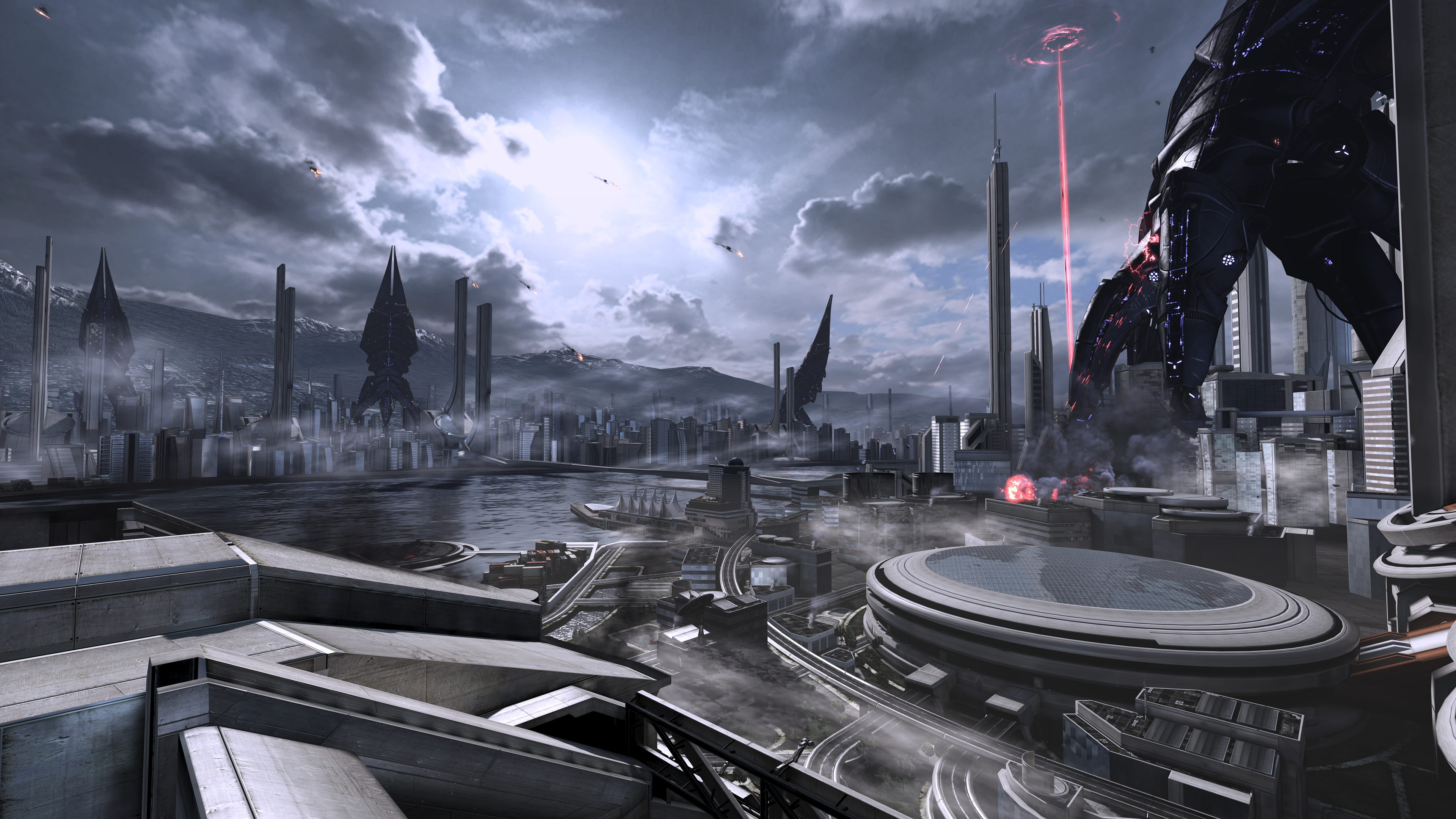
Culture-
Humans are generally seen to be very intelligent, abnormally ambitious, highly adaptable, individualistic and thus, unpredictable. They have a powerful desire to advance and improve themselves, and do so with such assertion that the normally staid Council races have been taken aback by their restlessness and relentless curiosity. The Earth's economy, while much smaller than any of the Council races, is very powerful relative to their size, and their military prowess is amongst the greatest in the galaxy, despite the fact that only 3% of humans volunteer for the Alliance military, a far smaller proportion than other races. Their ability to engage the turians in the First Contact War demonstrated graphically the potential of human military strength and is therefore a subject of concern for many races, who fear the consequences of another human-turian conflict.The discovery of the Martian ruins fundamentally united the inhabitants of Earth, resulting in the swift and sudden culmination of the pan-global cultural identity that had been slowly but steadily developing since the 21st century. Upon the foundation of the Systems Alliance, humans began to see themselves as a single, collective group: human as opposed to alien.Religion was, and to an extent, still is a major part of human culture, despite the fact that society is largely secular by the 22nd century. The discovery of the archives led to a series of commotions among those belonging to fundamentalist faiths, which ultimately resulted in the disintegration or revision of these religious beliefs. In 2171, Pope Clement XVI was assassinated and replaced by Leo XIV, whose beliefs about militarizing humanity was aligned more to the ideology of Cerberus. The existence of the position of pope indicates that Catholicism is still at large.

Government-
The Systems Alliance, which represents a majority of humans, has had an embassy on the Citadel since 2165. Many other species dislike their sudden ascendancy compared to their status as relative newcomers on the galactic stage. Some species feel that humanity is overly expansive in its colonization efforts and aggressive attempts to advance its position in galactic affairs. It took other species centuries to achieve what humanity has done in decades. Humans have also been doing what the Council could not: colonize planets in the Attican Traverse, the Skyllian Verge and along the borders of the Terminus Systems, all volatile regions where the Council has little authority. Human forces came into minor conflicts with the batarians over the Verge, which the batarians had been attempting to colonize themselves. When the batarians asked the Council to declare the Verge a "zone of batarian interest", they were refused; in response, the batarians became a rogue state, blaming humans for depriving them of valuable resources, and human-batarian relations have been hostile ever since. Unlike many species in Citadel space, humans have no close allies among the other races, though they are trade partners with the turians and asari. Without alliances or key political positions, humans have had to follow the edicts of the Council without having much influence on their decisions. Human ambassadors finally had their wishes answered when Shepard was admitted into the Spectres, the Council's elite operatives, and even further when they were given a seat on the Council, after either having saved them from the Battle of the Citadel, or having Humanity rebuild the Council when they were lost. However, now that Humanity has a seat on the Council, they are able to influence the Council's rulings, protect their own interests and have a say in the governing of Citadel space.
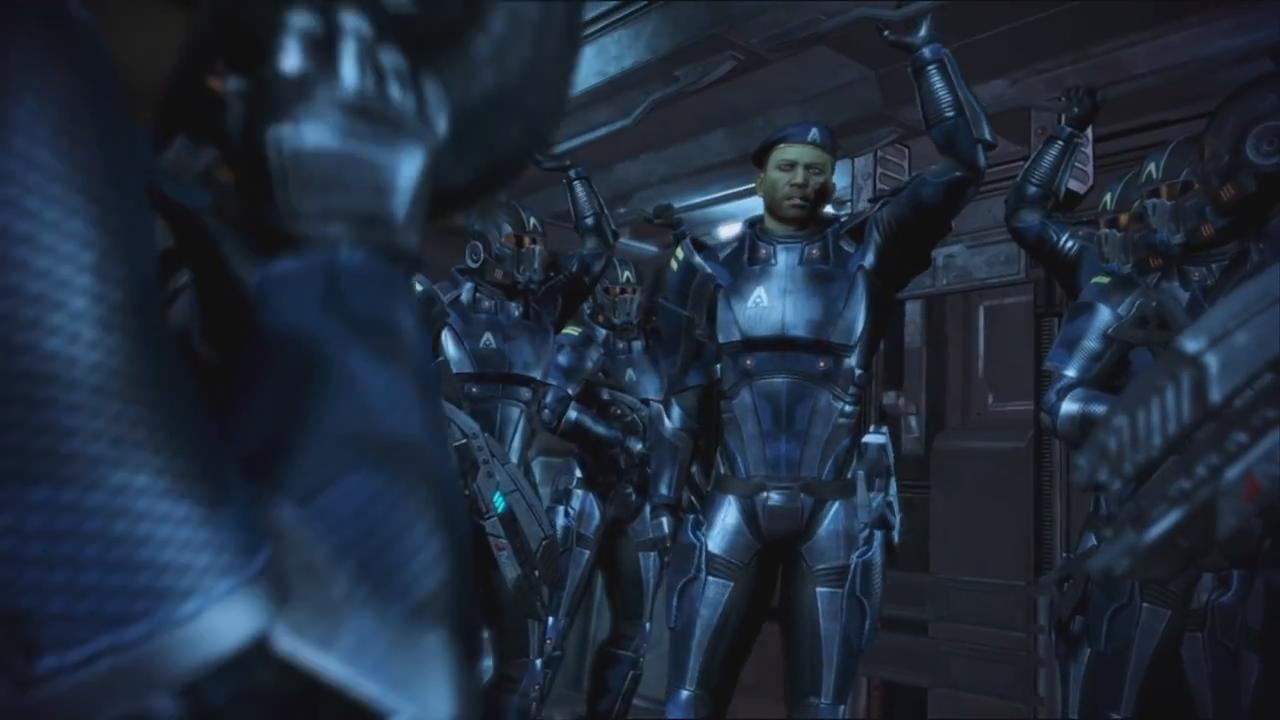
Andromeda-
In the year 2185, a human led expedition the that was started around a decade before is launched toward the unknown. Jein Garsen is the leader of this initiative, that has four council race filled Arks and a multi-species Nexus sent to Andromeda for unsaid reasons.

Turians:
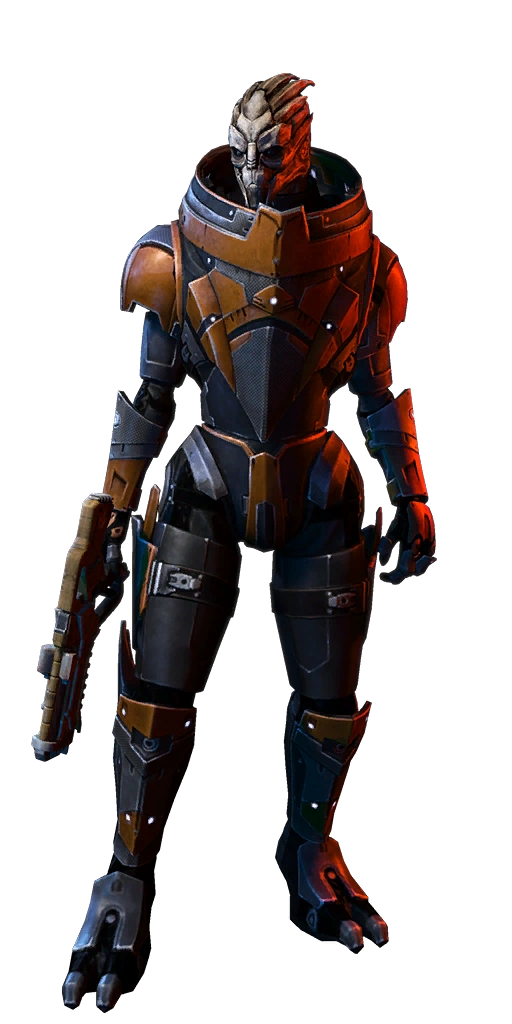
Turians are known for their militaristic and disciplined culture, the turians were the third race to join the Citadel Council. They gained their Council seat after defeating the hostile krogan for the Council during the Krogan Rebellions. The turians deployed a salarian-created biological weapon called the genophage, which virtually sterilised the krogan and sent them into a decline. The turians then filled the peacekeeping niche left by the once-cooperative krogan, and eventually gained a Council seat in recognition of their efforts. Originally from the planet Palaven, turians are best known for their military role, particularly their contributions of soldiers and starships to the Citadel Fleet. They are respected for their public service ethic—it was the turians who first proposed creating C-Sec—but are sometimes seen as imperialist or rigid by other races. There is some animosity between turians and humans, largely due to the turian role in the First Contact War. This bitterness is slowly beginning to heal—as shown by the cooperation of the two races on the construction of the SSV Normandy—but many turians still resent humans, and vice versa.

Biology-
Turians typically stand over six feet tall, have two long, proportionately thick fingers and an opposable thumb on each hand, each tipped with talons, and a set of mandibles around their mouths. The most distinguishing feature of turians is their metallic carapace, which contains trace amounts of thulium. The turians evolved this trait as a defense against the greater levels of solar radiation that penetrate their homeworld's weak magnetic field. Turian features are avian, making them resemble humanoid birds or raptors, however unlike most Earth avian creatures, turians are viviparous and give birth to live young. In 2165, David Anderson claimed that turians reminded him of the evolutionary link between birds and dinosaurs. Turians are also recognisable by their voices, which have a distinctive flanging effect. Males and females do not differ greatly in physical appearance, but female turians are more lithe and lack the crest of horns found in the males of the race. The lifespan of a turian is comparable to that of a human. Turians exhibit the characteristics of predators rather than those of prey species. Their forward-facing alert eyes give the impression that they possess outstanding eyesight and their teeth and jaws mimic the structures possessed by apex predators such as crocodiles or ancient, carnivorous dinosaurs. Needless to say, their talons on both their feet and hands seem capable of ripping flesh. As such, their diet is primarily meat-based. Their slender bodies also seem to suggest that they are also capable of moving at high speeds. However, they still lack the agility of humans or salarians. The turian homeworld, Palaven, has a metal-poor core, generating a weak magnetic field and allowing more solar radiation into the atmosphere. To deal with this, most forms of life on Palaven evolved some form of metallic "exoskeleton" to protect themselves. Their reflective plate-like skin makes turians less susceptible to long-term, low-level radiation exposure, but they do not possess any sort of "natural armor". A turian's thick skin does not stop projectiles and directed energy bolts. Turian blood has a dark blue colouration. Although life on Palaven is carbon-based and oxygen-breathing, it is built on dextro-amino acids. This places the turians in a distinct minority on the galactic stage; the quarians are the only other sapient dextro-protein race. The food of humans, asari, or salarians will at best pass through turian systems without providing any nutrition. At worst, it will trigger an allergic reaction that can be fatal if not immediately treated.


History-
Turian civilization spans fifteen thousand years of history. Before the dawn of their civilization, the race was known to elder spacefaring species like the Protheans, who viewed them as primitive as the other ruling races of the modern era.

The Unification War-
The turians had already discovered several mass relays and spawned colonies throughout the galaxy when the asari reached the Citadel. At about the time the asari were forming the Council with the salarians, the turians were embroiled in a bitter civil war next door. The Unification War, as it was later named, began with hostilities between the colonies furthest from the turian homeworld, Palaven. These colonies were run by local chieftains, many of whom had distanced themselves from the Hierarchy. Without the galvanizing influence of the government, the colonies became increasingly isolated and xenophobic. Colonists began wearing emblems or facial markings to differentiate themselves from members of other colonies and open hostilities became common. When war finally broke out, the Hierarchy maintained strict diplomacy and refused to get involved. After several years of fighting, less than a dozen factions remained and the Hierarchy finally intervened. By that time, the chieftains were too weak to resist; they were forced to put an end to fighting and renew their allegiance to the Hierarchy. Though peace was restored, it took several decades for animosity between colonists to fade completely. To this day, most turians still wear the facial markings of their home colonies.
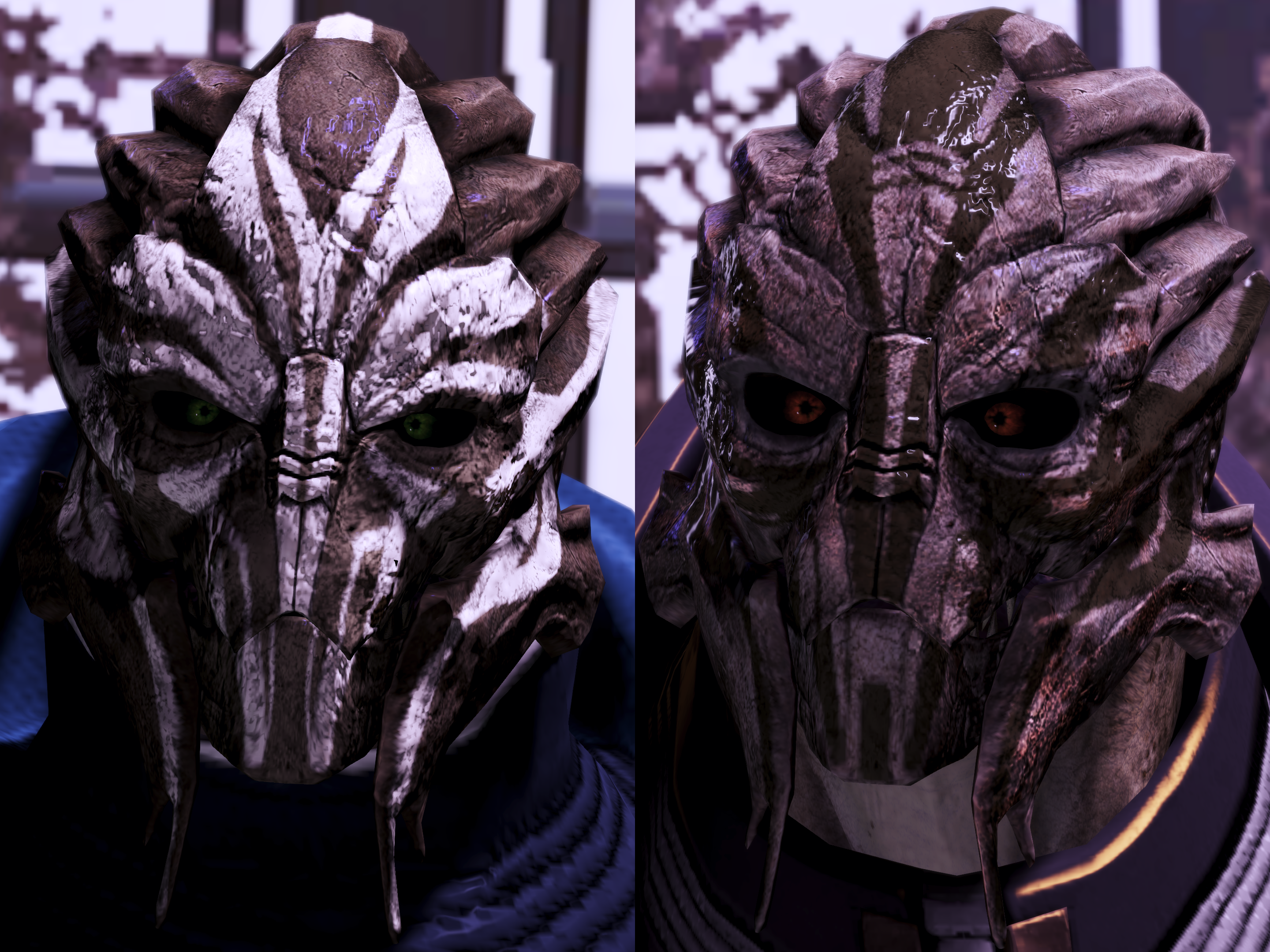
The Krogan Rebellions-
In the midst of the Krogan Rebellions, the Citadel Council made first contact with the turians. At the Council's behest, the turians brought their considerable war machine, the biggest in the known galaxy, to bear on the krogan which was now a recognized threat. While the initial turian offensive was successful in routing many krogan warrior bands, it provoked a massive counterattack from the krogan which devastated several turian colonies. Three turian worlds were rendered completely uninhabitable after the krogan used fusion torches to throw asteroids at them, and the bloodiest battle in turian history occurred at Digeris, where the planet was severely bombarded and the turians sacrificed many frigates and fighters to take out a fleet of krogan dreadnoughts. Rather than scaring off the turians with this show of force, the turians only fought with more resolve to quash the krogan utterly. Eventually, the turians implemented the salarian-developed genophage. With their advantage in numbers removed, the majority of krogan were subdued by 800 CE, although scattered insurgent actions would continue for decades. By 900 CE, the turians were granted full membership on the Citadel Council in gratitude for their service during the Krogan Rebellions. The turian military fills the military and peacekeeping niche left by the decimated krogan.

Relay 314 Incident-
In 2157 CE, following Council laws in place since the Rachni Wars which prohibited the activation of uncharted mass relays, a turian force opened fire on explorers from an as yet unknown race: humanity. One human starship managed to escape and warn the Systems Alliance, which retaliated and destroyed several turian vessels. The situation quickly escalated to war. Over the next several weeks, the outnumbered Alliance lost multiple scouting parties and patrols to turian offensives. The conflict came to a head when a turian fleet broke through Alliance lines and besieged the human colony of Shanxi. With no other options, the Alliance garrison on Shanxi surrendered, and the turians proceeded to occupy the world, confident that the majority of Alliance forces had been defeated, not realizing that this was just a human colony and not the home world. However, one month later the Alliance's Second Fleet caught the turian occupiers by surprise and evicted them from the planet. Both sides began preparations for a protracted interplanetary war. Before that could happen, the Citadel Council intervened and revealed the galactic community to humanity. Terms of peace were negotiated and the conflict effectively brought to an end. The turians were ordered by the Council to give heavy reparations to the Alliance for their part in instigating the conflict, known to the galaxy as the "Relay 314 Incident". Mistrust between both races would linger for years to come.
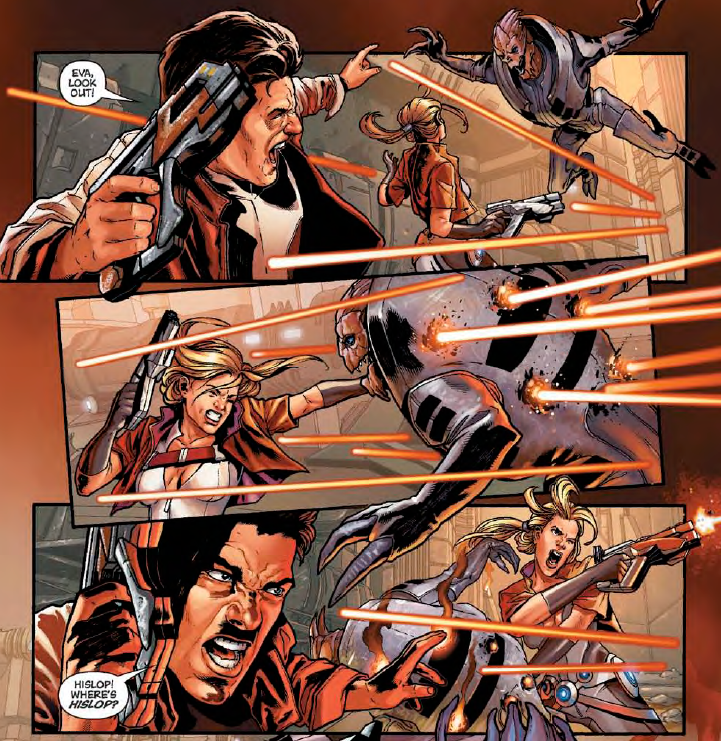
The Reaper War-
During the Reaper invasion in 2186, the turian colony of Taetrus is one of the first worlds the Reapers attack following their conquest of Khar'shan and Earth. The Turian Hierarchy made two attempts to liberate Taetrus, but were unsuccessful. As the Reapers began to pour into the Trebia system and assault Palaven, they broadcasted images of Taetrus's destruction to the turian comm buoy network. The Reapers met with heavy resistance from the turians during their invasion of Palaven and Menae; much of the turian fleet remained operable after the Reapers' initial assault, and the turian citizenry was heavily armed and capable of supporting turian troops. Although the Hierarchy maintained that Palaven had not fallen and the battle for it continued, the Reapers nonetheless made significant gains and turian casualties rapidly mounted. Relief came with the help of an unlikely ally: the krogan, who had agreed to join the war once the genophage was cured. The combined turian and krogan counterattack caught the Reapers off-guard. While the Reaper fleet orbiting Palaven was distracted by an apparent turian offensive, transport craft carrying krogan reinforcements landed on Palaven and coordinated with turian resistance forces, handing over warp bombs and fission weapons. These weapons were smuggled aboard Reaper processor ships and detonated simultaneously across the globe, allowing large swathes of territory to be retaken. News of the victory gave a much-needed boost to the morale of the turian resistance and the galactic public, but it was not long before the Reapers retaliated. Realizing the hopelessness of the situation, Primarch Victus ordered the remaining turian warships to withdraw from the Trebia system in order to participate in the Allied assault on Earth. The only way to end the war was to activate the Crucible, and doing so required the Citadel, which the Reapers had moved to Earth orbit for safekeeping. Turian forces heroically assisted in the space and ground battles, while Commander Shepard reached the Citadel to trigger the Crucible.
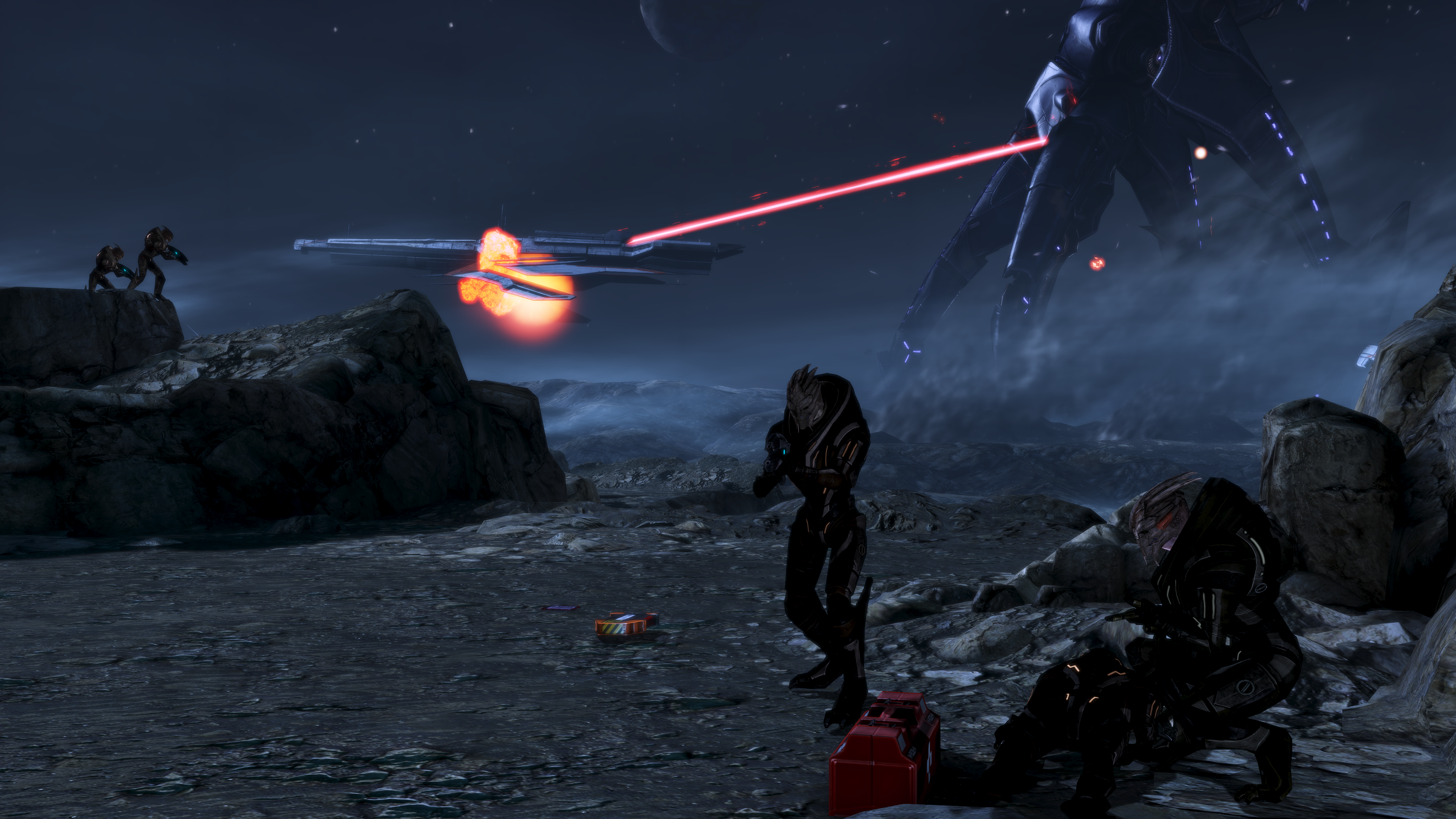
Culture-
Since the Unification War, turians normally wear elaborate tattoos marking their colony of origin, though it is not known which markings distinguish which colony or if color has any meaning. These markings are usually white, particularly on turians with darker carapaces, but can be of other colors such as blue for Garrus Vakarian or red for Nyreen Kandros. The lack of facial markings is looked down upon in turian society; the turian term "barefaced" refers to one who is beguiling or not to be trusted. It is also a slang term for politicians.
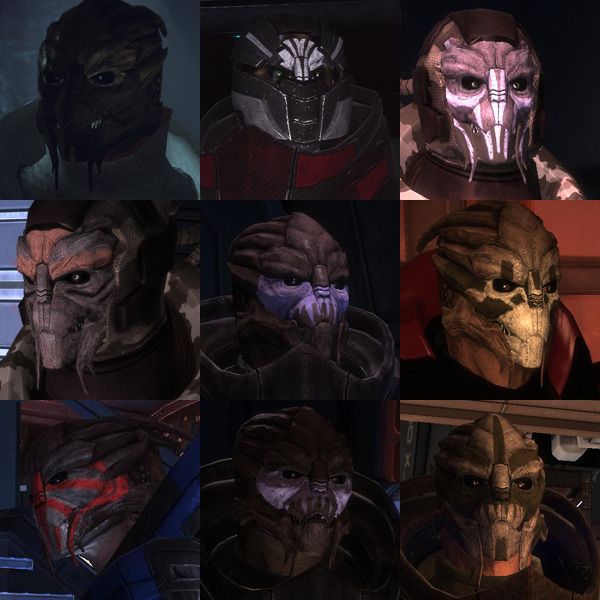
CSec-
Turians are noted for their strong sense of public service. It is rare to find one who puts his needs ahead of the group. Every citizen from age 15 to 30 serves the state in some capacity, as anything from a soldier to an administrator, from a construction engineer to a sanitation worker. Turians have a strong inclination toward public service and self-sacrifice, so they tend to be poor entrepreneurs. To compensate, they accepted the mercantile volus as a client race, offering protection in exchange for their fiscal expertise. Turian society is highly regimented and very organized, and the species is known for its strict discipline and work ethic. Turians are willing to do what needs to be done, and they always follow through. They are not easily spurred to violence, but when conflict is inevitable, they only understand a concept of "total war." They do not believe in skirmishes or small-scale battles; they use massive fleets and numbers to defeat an adversary so completely that they remove any threat of having to fight the same opponent more than once. They do not exterminate their enemy, but so completely devastate their military that the enemy has no choice but to become a colony of the turians. It is theorized that another conflict between the rapidly advancing humans and the turians could annihilate a large portion of known space. The turian military is the center of their society. It is not just an armed force; it is an all-encompassing public works organization. The military police are also the civic police. The fire brigades serve the civilian population as well as military facilities. The corps of engineers builds and maintains spaceports, schools, water purification plants, and power stations. The merchant marine ensures that all worlds get needed resources.

Socialization-
Other species see turians as "men of action," and they are generally regarded as the most progressive of the Citadel races, with only humans rivaling this. Since their culture is based on the structure of a military hierarchy, changes and advances accepted by the leadership are quickly adopted by the rest of society with minimal resistance. While turians are individuals with personal desires, their instinct is to equate the self with the group, and to set aside all personal desires for the good of all. Turians are taught to have a strong sense of personal accountability, the 'turian honor' that other races find so remarkable. Turians are taught to own every decision they make, good or ill. The worst sin they can make in the eyes of their people is to lie about their own actions. Turians who murder will try to get away with it, but if directly questioned, most will confess the crime.
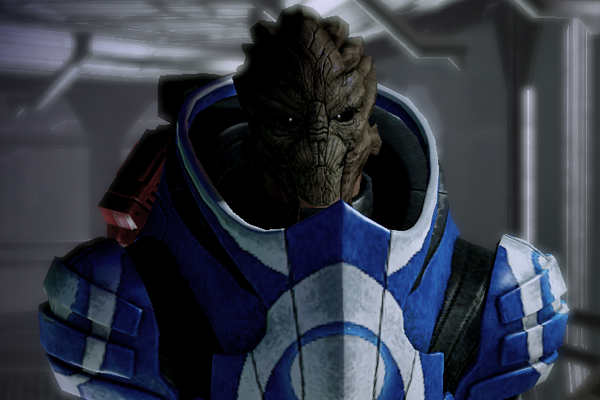
Economy-
The turian economy is vastly larger than that of the Alliance, but cannot match the size and power of that of the asari. For many years, development was hampered by cultural disinterest in economics. When the turians accepted the volus as a client race, business development improved. The military is supported by a well-developed infrastructure. Manufacturers such as Armax Arsenal and the Haliat Armory produce advanced, reliable equipment. Volus manufacturers have been known to produce cheap knock-offs of turian equipment.

Religion-
Turians believe that groups and areas have "spirits" that transcend the individual. For example, a military unit would be considered to have a literal spirit that embodies the honor and courage it has displayed. A city's spirit reflects the accomplishments and industry of its residents. An ancient tree's spirit reflects the beauty and tranquility of the area it grows within. These spirits are neither good nor evil, nor are they appealed to for intercession. Turians do not believe spirits can affect the world, but spirits can inspire the living. Prayers and rituals allow an individual to converse with a spirit for guidance or inspiration. For example, a turian who finds his loyalty tested may appeal to the spirit of his unit, hoping to reconnect with the pride and honor of the group. A turian who wishes to create a work of art may attempt to connect with the spirit of a beautiful location. Turians enjoy absolute freedom of religion and can practice whatever appeals to them so long as it does not impede anyone's ability to perform their duties. There are many practitioners of the asari siarist philosophy. Since opening dialog with the human Systems Alliance, some turians have embraced Confucianism and Zen Buddhism. In the past, turians believed that titans strode across Palaven, reaching for the heavens. They worshiped these deities and communicated with them at a structure called Temple Palaven. The temple was tended to by a religious order called the Valluvian Priests, who wear special purple robes which obscure their forms. In order for turians to join this order, they had to be considered worthy enough through some action. When the turians spread out from Palaven and discovered other life among the stars, however, they sealed Temple Palaven because they no longer needed legends to prod them upward. With the temple abandoned, eventually the Valluvian Priests fell into legend.
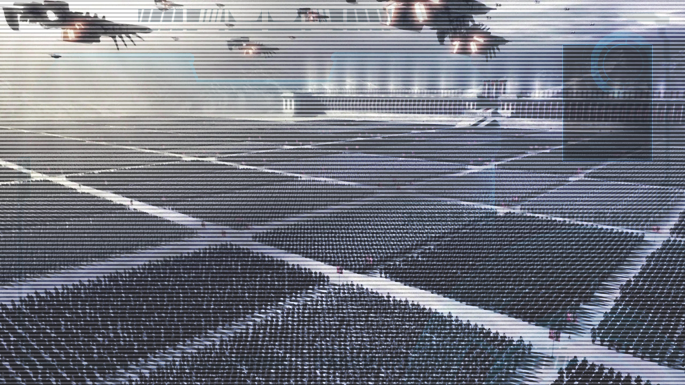
Government-
The turian government, known as the Turian Hierarchy, is a hierarchical meritocracy. While it has great potential for misuse, this is tempered by the civic duty and personal responsibility turians learn during their childhood. Turians have 27 citizenship tiers, beginning with civilians. The initial period of military service is the second tier. Formal citizenship is conferred at the third tier, after boot camp. For client races, citizenship is granted after the individual musters out. Higher-ranked citizens are expected to lead and protect subordinates. Lower-ranking citizens are expected to obey and support superiors. Promotion to another tier of citizenship is based on the personal assessment of one's superiors and co-rankers. At the top are the Primarchs, who each rule a colonization cluster. The Primarchs vote on matters of national importance. They otherwise maintain a "hands-off" policy, trusting the citizens on each level below them to do their jobs competently. Throughout their lives, turians ascend to the higher tiers and are occasionally "demoted" to lower ones. The stigma associated with demotion lies not on the individual, but on those who promoted them when they weren't ready for additional responsibility. This curbs the tendency to promote individuals into positions beyond their capabilities. Settling into a role and rank is not considered stagnation. Turians value knowing one's own limitations more than being ambitious. Turians enjoy broad freedoms. So long as one completes their duties, and does not prevent others from completing theirs, nothing is forbidden. For example, there are no laws against recreational drug use, but if someone is unable to complete their duties due to drug use, their superiors step in. Judicial proceedings are 'interventions.' Peers express their concern, and try to convince the offender to change. If rehabilitation fails, turians have no qualms about sentencing dangerous individuals to life at hard labor for the state.

Military-
Although they lack the brutality of the krogan, the refined biotic skill of the asari, and the adaptability of the humans, the turian military has formidable discipline. Officers and NCOs are "lifers" with years of field experience. Enlisted personnel are thoroughly trained and stay calm under fire. Turian units don't break. Even if their entire line collapses, they fall back in order, setting ambushes as they go. A popular saying holds: "You will only see a turian's back once he's dead." Boot camp begins on the 15th birthday. Soldiers receive a year of training before being assigned to a field unit; officers train for even longer. Most serve until the age of 30, at which they become part of the Reserves. Even if they suffer injuries preventing front-line service, most do support work behind the lines. Biotics are uncommon. While admired for their exacting skills, biotics' motives are not always fully trusted by the common soldier. The turians prefer to assign their biotics to specialist teams called Cabals. Turian wars are often marked by citizen resistance. Most turian families keep small arms in their homes and take basic training courses that include instruction on how to create simple anti-vehicle explosive devices. To suppress citizen militias, the Turian Hierarchy makes use of "execution squads" known as hastatim. First, "safe camps" are established in cities to incentivize surrender. Next, hastatim soldiers are deployed door-to-door; anyone who refuses to be transported to a safe camp or demonstrates hostile intent will be shot. Hastatim burial units then retrieve and cremate the bodies. This approach is necessary because without the safe camps, no turian would ever surrender, and without the hastatim, it would take years for a population to be pacified. The mainstay of the turian infantry is the Phaeston assault rifle, a light, accurate, and versatile weapon that nonetheless packs more punch than other rifles of its size. Other turian weapons include the Krysae anti-materiel sniper rifle, and the ML-77 Missile Launcher, manufactured by Armax Arsenal, one of the turian military's main suppliers. Vehicles the turians employ include the A-61 Mantis Gunship, a versatile multi-role aircraft, the C77 Tyrus, a durable 13-ton infantry fighting vehicle, an APC variant of the M-080, the Jiris Infantry Fighting Vehicle, a hovercraft capable of traversing most terrains and engaging enemies at 20 kilometers with its missiles.
The turian navy is divided into at least 32 fleets, and is allotted more dreadnoughts than any other race. The navy serves as a galactic peacekeeping force, and is also the primary military arm of the Council, contributing the single largest portion of the Citadel Fleet.

Asari:
Salarians:
Drell:
Hanar:
Elcor:
Volus:
Keepers:
Krogan:
Quarians:
Batarians:
Vorcha:
Rachni:
Geth:
Yahg:
Collectors:
Protheans:
Reapers:
Raloi:
Inusannon:
Most of this is quoted from wiki and in game sources, please inform me of any discrepancies.
Humans:

Beginning-
From the planet Earth, humans are the newest sentient species to enter the galactic stage and are rapidly expanding and developing their technology. They discovered a Prothean data cache on Mars in 2148, and the mass relay networks shortly thereafter.

Biology-
Humans have a fairly robust physiology. Their size and proportions give an average appearance of the galactic community. In comparison to the Council races, humans are roughly physically comparable with turians, and less agile than asari. Humans on average are stronger than salarians but not as fast. Humans can be compared similarly to other Milky Way races, being stronger in some areas and weaker in others. Like most organic races, humans are also capable of producing biotic individuals. Human biotics do not show as much inate control other them as the asari, but can reach impressive levels of pure biotic power. Most cases of biotics in humans are the result of pre-natal exposure to element zero, which carries a high risk of medical complications. However there are cases where humans are given biotic potential at older ages. These cases are rare though. Humans can live to about 150 years with their physical primes lasting well into their 90's, and recent medical advances have eradicated almost all known diseases that afflict them. Since humans only emerged on the galactic stage within the last thirty years, it is highly likely that the introduction of new technology into their society will greatly increase their average lifespan. Humans reach physical maturity at approximately eighteen years of age, at which point they have usually finished their academic education and either directly enter the workforce or begin training for a profession. Humans have far greater genetic diversity compared to other species, allowing them to adapt to a variety of worlds and situations. This also makes human genetic material useful in biological experiments, as a control group. Despite the substantial genetic diversity of humans, certain physical traits have been becoming more rare ever since the 19th and 20th centuries, when the mixing of different Earth ethnicities, due to social progression and acceptance, became more commonplace. To this end, with the merging of genetics, certain traits have declined in frequency. Recessive physical traits like blonde and red hair, as well as blue and green eyes, are even less common in the 22nd century.

History-
Human space exploration began in earnest in the late 21st century. In 2069 CE, Armstrong Outpost in Shackleton Crater on Luna was founded as humanity's first extraterrestrial settlement. In 2103, the European Space Agency established Lowell City in Eos Chasma on Mars, paving the way for additional settlements and scientific outposts throughout Sol, such as Gagarin Station near Pluto, which was under construction by 2142. In the early years, however, some were dissatisfied with the pace of official exploration, leading to a series of private ventures. In 2070, billionaire Victor Manswell began funding his own extrasolar colonization endeavor. The Manswell Expedition, as it became known, successfully launched five years later with 300 cryogenically-frozen colonists bound for the Alpha Centauri system, but communications with the expedition's ship were soon lost and the colonists classified as missing. The pre-FTL expedition was forgotten until 2186, when the colonists were discovered alive and well on a planet in Alpha Centauri by an asari exploration team.

Discovery of Mass Effect Physics-
In 2148, human explorers on Mars uncovered a long-ruined Prothean observation post, with a surviving data cache that proved Protheans had studied Cro-Magnon humans millennia ago. While religions tried to assimilate this discovery into their doctrine, a global rush began to decipher the petabytes of data from the outpost. Discovering information on a mass relay orbiting Pluto, explorers managed to open the Charon Relay and discovered it led to Arcturus. With the help of the fledgling Systems Alliance, humans expanded to other systems, opening any mass relays they could find. They then adapted this technology to upgrade their own.

The First Contact War and Expansion-
Humans first came to the attention of the galactic community after a brief but intense conflict with the turians, known by humans as the First Contact War, begun in 2157. The conflict began when the turians attacked a human fleet attempting to activate a dormant mass relay (illegal under Council law) and then occupied the human colony of Shanxi. Led by Admiral Kastanie Drescher, the Second Fleet then launched a massive counter-attack, which caught the turians by surprise and expelled them from Shanxi. The conflict caught the attention of the Citadel Council, which wasted no time brokering a peace, thus introducing humans to the galactic community. As a consequence of the Alliance's swift and decisive action during the First Contact War, the Alliance became the representative and supranational governing body of humanity. Since then, humans have rapidly risen in prominence, but it was not until the battle against sovereign that they rose to galactic power. In 2165, humanity was granted an embassy on the Citadel in recognition of their growing power and influence in the galactic community. The timing of this achievement, less than a decade after first contact, caused some friction with other Citadel races who had waited decades for such recognition. Turian relations with humans have been troubled ever since. Humanity continued to expand to unclaimed star systems on the edge of Citadel space, which eventually led to competition with the batarians, and their eventual capture by the collectors. When the batarians tried and failed to convince the Council to declare the Skyllian Verge "a zone of batarian interest", they closed their embassy and withdrew from Citadel space. Viewing humans as the cause of their fall from grace, batarians frequently came into conflict with human colonies, especially batarian slavers. Tensions between humans and batarians persist for decades.

The Eden Prime War-
Humans were caught off-guard by the geth attack on Eden Prime, humanity's most prosperous colony, in 2183. Systems Alliance forces and the legendary Commander Shepard were involved in several operations against geth incursions into Alliance territory. The conflict between the Systems Alliance and geth later became known as the Eden Prime War, and culminated in the Battle of the Citadel, where a massive invasion fleet led by the flagship Sovereign tore through Citadel defenses. With the timely aid of the Alliance's Fifth Fleet, the geth were defeated. Depending on Commander Shepard's actions, the Council is saved and the Systems Alliance granted a Council seat, or the Council perishes and the Alliance forms a new Council. Thanks to their efforts in the Battle of the Citadel, humanity rises to a new level of prominence in the galaxy.

Vanishing Colonies-
Less than two years after the Battle of the Citadel, contact with some human colonies in the Terminus Systems is lost. Investigations reveal that the colonies' inhabitants have completely disappeared, with no trace of what happened to them. The Systems Alliance does little to intervene; with no explanation for the disappearances, the Alliance is unable to prevent further incidents. Humans on fringe colony worlds perceive the lack of action as an unwillingness to aid them, and begin to harbor resentment against the Alliance. The Alliance tries to rebuild trust through goodwill efforts, such as providing Horizon with new anti-starship defense turrents and some alliance personnel to watch over them. It is eventually discovered by Commander Shepard that the collectors were responsible.

The Reaper War-
In 2186, the Reapers invade the galaxy through batarian space and storm human territory. Numerous human colonies go dark, but the nature of the threat remains unknown until the Reapers arrive at Earth. Their assault rapidly overwhelms the Alliance Navy and Earth's military forces. With Earth fallen, Admiral Steven Hackett orders the remaining Alliance forces to retreat. Throughout the war, the majority of human worlds remain under Reaper control as they begin their harvest. Billions of humans perish. After Commander Shepard unites the galaxy to fight the Reapers and the Crucible is constructed, the Alliance leads the charge to take back Earth. As the galaxy's Allied Sword fleet engages the Reapers in Earth's orbit, Hammer ground forces land and coordinate with resistance forces led by Admiral David Anderson. The offensive suffers massive casualties, but succeed in getting Shepard and Anderson to the Citadel, which the Reapers had moved to Earth for safekeeping after learning of the Crucible. Shepard opens the Citadel's arms, the Crucible is attached, and that Commander makes a crucial decision that affects the fate of the galaxy.

Culture-
Humans are generally seen to be very intelligent, abnormally ambitious, highly adaptable, individualistic and thus, unpredictable. They have a powerful desire to advance and improve themselves, and do so with such assertion that the normally staid Council races have been taken aback by their restlessness and relentless curiosity. The Earth's economy, while much smaller than any of the Council races, is very powerful relative to their size, and their military prowess is amongst the greatest in the galaxy, despite the fact that only 3% of humans volunteer for the Alliance military, a far smaller proportion than other races. Their ability to engage the turians in the First Contact War demonstrated graphically the potential of human military strength and is therefore a subject of concern for many races, who fear the consequences of another human-turian conflict.The discovery of the Martian ruins fundamentally united the inhabitants of Earth, resulting in the swift and sudden culmination of the pan-global cultural identity that had been slowly but steadily developing since the 21st century. Upon the foundation of the Systems Alliance, humans began to see themselves as a single, collective group: human as opposed to alien.Religion was, and to an extent, still is a major part of human culture, despite the fact that society is largely secular by the 22nd century. The discovery of the archives led to a series of commotions among those belonging to fundamentalist faiths, which ultimately resulted in the disintegration or revision of these religious beliefs. In 2171, Pope Clement XVI was assassinated and replaced by Leo XIV, whose beliefs about militarizing humanity was aligned more to the ideology of Cerberus. The existence of the position of pope indicates that Catholicism is still at large.

Government-
The Systems Alliance, which represents a majority of humans, has had an embassy on the Citadel since 2165. Many other species dislike their sudden ascendancy compared to their status as relative newcomers on the galactic stage. Some species feel that humanity is overly expansive in its colonization efforts and aggressive attempts to advance its position in galactic affairs. It took other species centuries to achieve what humanity has done in decades. Humans have also been doing what the Council could not: colonize planets in the Attican Traverse, the Skyllian Verge and along the borders of the Terminus Systems, all volatile regions where the Council has little authority. Human forces came into minor conflicts with the batarians over the Verge, which the batarians had been attempting to colonize themselves. When the batarians asked the Council to declare the Verge a "zone of batarian interest", they were refused; in response, the batarians became a rogue state, blaming humans for depriving them of valuable resources, and human-batarian relations have been hostile ever since. Unlike many species in Citadel space, humans have no close allies among the other races, though they are trade partners with the turians and asari. Without alliances or key political positions, humans have had to follow the edicts of the Council without having much influence on their decisions. Human ambassadors finally had their wishes answered when Shepard was admitted into the Spectres, the Council's elite operatives, and even further when they were given a seat on the Council, after either having saved them from the Battle of the Citadel, or having Humanity rebuild the Council when they were lost. However, now that Humanity has a seat on the Council, they are able to influence the Council's rulings, protect their own interests and have a say in the governing of Citadel space.

Andromeda-
In the year 2185, a human led expedition the that was started around a decade before is launched toward the unknown. Jein Garsen is the leader of this initiative, that has four council race filled Arks and a multi-species Nexus sent to Andromeda for unsaid reasons.

Turians:

Turians are known for their militaristic and disciplined culture, the turians were the third race to join the Citadel Council. They gained their Council seat after defeating the hostile krogan for the Council during the Krogan Rebellions. The turians deployed a salarian-created biological weapon called the genophage, which virtually sterilised the krogan and sent them into a decline. The turians then filled the peacekeeping niche left by the once-cooperative krogan, and eventually gained a Council seat in recognition of their efforts. Originally from the planet Palaven, turians are best known for their military role, particularly their contributions of soldiers and starships to the Citadel Fleet. They are respected for their public service ethic—it was the turians who first proposed creating C-Sec—but are sometimes seen as imperialist or rigid by other races. There is some animosity between turians and humans, largely due to the turian role in the First Contact War. This bitterness is slowly beginning to heal—as shown by the cooperation of the two races on the construction of the SSV Normandy—but many turians still resent humans, and vice versa.

Biology-
Turians typically stand over six feet tall, have two long, proportionately thick fingers and an opposable thumb on each hand, each tipped with talons, and a set of mandibles around their mouths. The most distinguishing feature of turians is their metallic carapace, which contains trace amounts of thulium. The turians evolved this trait as a defense against the greater levels of solar radiation that penetrate their homeworld's weak magnetic field. Turian features are avian, making them resemble humanoid birds or raptors, however unlike most Earth avian creatures, turians are viviparous and give birth to live young. In 2165, David Anderson claimed that turians reminded him of the evolutionary link between birds and dinosaurs. Turians are also recognisable by their voices, which have a distinctive flanging effect. Males and females do not differ greatly in physical appearance, but female turians are more lithe and lack the crest of horns found in the males of the race. The lifespan of a turian is comparable to that of a human. Turians exhibit the characteristics of predators rather than those of prey species. Their forward-facing alert eyes give the impression that they possess outstanding eyesight and their teeth and jaws mimic the structures possessed by apex predators such as crocodiles or ancient, carnivorous dinosaurs. Needless to say, their talons on both their feet and hands seem capable of ripping flesh. As such, their diet is primarily meat-based. Their slender bodies also seem to suggest that they are also capable of moving at high speeds. However, they still lack the agility of humans or salarians. The turian homeworld, Palaven, has a metal-poor core, generating a weak magnetic field and allowing more solar radiation into the atmosphere. To deal with this, most forms of life on Palaven evolved some form of metallic "exoskeleton" to protect themselves. Their reflective plate-like skin makes turians less susceptible to long-term, low-level radiation exposure, but they do not possess any sort of "natural armor". A turian's thick skin does not stop projectiles and directed energy bolts. Turian blood has a dark blue colouration. Although life on Palaven is carbon-based and oxygen-breathing, it is built on dextro-amino acids. This places the turians in a distinct minority on the galactic stage; the quarians are the only other sapient dextro-protein race. The food of humans, asari, or salarians will at best pass through turian systems without providing any nutrition. At worst, it will trigger an allergic reaction that can be fatal if not immediately treated.


History-
Turian civilization spans fifteen thousand years of history. Before the dawn of their civilization, the race was known to elder spacefaring species like the Protheans, who viewed them as primitive as the other ruling races of the modern era.

The Unification War-
The turians had already discovered several mass relays and spawned colonies throughout the galaxy when the asari reached the Citadel. At about the time the asari were forming the Council with the salarians, the turians were embroiled in a bitter civil war next door. The Unification War, as it was later named, began with hostilities between the colonies furthest from the turian homeworld, Palaven. These colonies were run by local chieftains, many of whom had distanced themselves from the Hierarchy. Without the galvanizing influence of the government, the colonies became increasingly isolated and xenophobic. Colonists began wearing emblems or facial markings to differentiate themselves from members of other colonies and open hostilities became common. When war finally broke out, the Hierarchy maintained strict diplomacy and refused to get involved. After several years of fighting, less than a dozen factions remained and the Hierarchy finally intervened. By that time, the chieftains were too weak to resist; they were forced to put an end to fighting and renew their allegiance to the Hierarchy. Though peace was restored, it took several decades for animosity between colonists to fade completely. To this day, most turians still wear the facial markings of their home colonies.

The Krogan Rebellions-
In the midst of the Krogan Rebellions, the Citadel Council made first contact with the turians. At the Council's behest, the turians brought their considerable war machine, the biggest in the known galaxy, to bear on the krogan which was now a recognized threat. While the initial turian offensive was successful in routing many krogan warrior bands, it provoked a massive counterattack from the krogan which devastated several turian colonies. Three turian worlds were rendered completely uninhabitable after the krogan used fusion torches to throw asteroids at them, and the bloodiest battle in turian history occurred at Digeris, where the planet was severely bombarded and the turians sacrificed many frigates and fighters to take out a fleet of krogan dreadnoughts. Rather than scaring off the turians with this show of force, the turians only fought with more resolve to quash the krogan utterly. Eventually, the turians implemented the salarian-developed genophage. With their advantage in numbers removed, the majority of krogan were subdued by 800 CE, although scattered insurgent actions would continue for decades. By 900 CE, the turians were granted full membership on the Citadel Council in gratitude for their service during the Krogan Rebellions. The turian military fills the military and peacekeeping niche left by the decimated krogan.

Relay 314 Incident-
In 2157 CE, following Council laws in place since the Rachni Wars which prohibited the activation of uncharted mass relays, a turian force opened fire on explorers from an as yet unknown race: humanity. One human starship managed to escape and warn the Systems Alliance, which retaliated and destroyed several turian vessels. The situation quickly escalated to war. Over the next several weeks, the outnumbered Alliance lost multiple scouting parties and patrols to turian offensives. The conflict came to a head when a turian fleet broke through Alliance lines and besieged the human colony of Shanxi. With no other options, the Alliance garrison on Shanxi surrendered, and the turians proceeded to occupy the world, confident that the majority of Alliance forces had been defeated, not realizing that this was just a human colony and not the home world. However, one month later the Alliance's Second Fleet caught the turian occupiers by surprise and evicted them from the planet. Both sides began preparations for a protracted interplanetary war. Before that could happen, the Citadel Council intervened and revealed the galactic community to humanity. Terms of peace were negotiated and the conflict effectively brought to an end. The turians were ordered by the Council to give heavy reparations to the Alliance for their part in instigating the conflict, known to the galaxy as the "Relay 314 Incident". Mistrust between both races would linger for years to come.

The Reaper War-
During the Reaper invasion in 2186, the turian colony of Taetrus is one of the first worlds the Reapers attack following their conquest of Khar'shan and Earth. The Turian Hierarchy made two attempts to liberate Taetrus, but were unsuccessful. As the Reapers began to pour into the Trebia system and assault Palaven, they broadcasted images of Taetrus's destruction to the turian comm buoy network. The Reapers met with heavy resistance from the turians during their invasion of Palaven and Menae; much of the turian fleet remained operable after the Reapers' initial assault, and the turian citizenry was heavily armed and capable of supporting turian troops. Although the Hierarchy maintained that Palaven had not fallen and the battle for it continued, the Reapers nonetheless made significant gains and turian casualties rapidly mounted. Relief came with the help of an unlikely ally: the krogan, who had agreed to join the war once the genophage was cured. The combined turian and krogan counterattack caught the Reapers off-guard. While the Reaper fleet orbiting Palaven was distracted by an apparent turian offensive, transport craft carrying krogan reinforcements landed on Palaven and coordinated with turian resistance forces, handing over warp bombs and fission weapons. These weapons were smuggled aboard Reaper processor ships and detonated simultaneously across the globe, allowing large swathes of territory to be retaken. News of the victory gave a much-needed boost to the morale of the turian resistance and the galactic public, but it was not long before the Reapers retaliated. Realizing the hopelessness of the situation, Primarch Victus ordered the remaining turian warships to withdraw from the Trebia system in order to participate in the Allied assault on Earth. The only way to end the war was to activate the Crucible, and doing so required the Citadel, which the Reapers had moved to Earth orbit for safekeeping. Turian forces heroically assisted in the space and ground battles, while Commander Shepard reached the Citadel to trigger the Crucible.

Culture-
Since the Unification War, turians normally wear elaborate tattoos marking their colony of origin, though it is not known which markings distinguish which colony or if color has any meaning. These markings are usually white, particularly on turians with darker carapaces, but can be of other colors such as blue for Garrus Vakarian or red for Nyreen Kandros. The lack of facial markings is looked down upon in turian society; the turian term "barefaced" refers to one who is beguiling or not to be trusted. It is also a slang term for politicians.

CSec-
Turians are noted for their strong sense of public service. It is rare to find one who puts his needs ahead of the group. Every citizen from age 15 to 30 serves the state in some capacity, as anything from a soldier to an administrator, from a construction engineer to a sanitation worker. Turians have a strong inclination toward public service and self-sacrifice, so they tend to be poor entrepreneurs. To compensate, they accepted the mercantile volus as a client race, offering protection in exchange for their fiscal expertise. Turian society is highly regimented and very organized, and the species is known for its strict discipline and work ethic. Turians are willing to do what needs to be done, and they always follow through. They are not easily spurred to violence, but when conflict is inevitable, they only understand a concept of "total war." They do not believe in skirmishes or small-scale battles; they use massive fleets and numbers to defeat an adversary so completely that they remove any threat of having to fight the same opponent more than once. They do not exterminate their enemy, but so completely devastate their military that the enemy has no choice but to become a colony of the turians. It is theorized that another conflict between the rapidly advancing humans and the turians could annihilate a large portion of known space. The turian military is the center of their society. It is not just an armed force; it is an all-encompassing public works organization. The military police are also the civic police. The fire brigades serve the civilian population as well as military facilities. The corps of engineers builds and maintains spaceports, schools, water purification plants, and power stations. The merchant marine ensures that all worlds get needed resources.

Socialization-
Other species see turians as "men of action," and they are generally regarded as the most progressive of the Citadel races, with only humans rivaling this. Since their culture is based on the structure of a military hierarchy, changes and advances accepted by the leadership are quickly adopted by the rest of society with minimal resistance. While turians are individuals with personal desires, their instinct is to equate the self with the group, and to set aside all personal desires for the good of all. Turians are taught to have a strong sense of personal accountability, the 'turian honor' that other races find so remarkable. Turians are taught to own every decision they make, good or ill. The worst sin they can make in the eyes of their people is to lie about their own actions. Turians who murder will try to get away with it, but if directly questioned, most will confess the crime.

Economy-
The turian economy is vastly larger than that of the Alliance, but cannot match the size and power of that of the asari. For many years, development was hampered by cultural disinterest in economics. When the turians accepted the volus as a client race, business development improved. The military is supported by a well-developed infrastructure. Manufacturers such as Armax Arsenal and the Haliat Armory produce advanced, reliable equipment. Volus manufacturers have been known to produce cheap knock-offs of turian equipment.

Religion-
Turians believe that groups and areas have "spirits" that transcend the individual. For example, a military unit would be considered to have a literal spirit that embodies the honor and courage it has displayed. A city's spirit reflects the accomplishments and industry of its residents. An ancient tree's spirit reflects the beauty and tranquility of the area it grows within. These spirits are neither good nor evil, nor are they appealed to for intercession. Turians do not believe spirits can affect the world, but spirits can inspire the living. Prayers and rituals allow an individual to converse with a spirit for guidance or inspiration. For example, a turian who finds his loyalty tested may appeal to the spirit of his unit, hoping to reconnect with the pride and honor of the group. A turian who wishes to create a work of art may attempt to connect with the spirit of a beautiful location. Turians enjoy absolute freedom of religion and can practice whatever appeals to them so long as it does not impede anyone's ability to perform their duties. There are many practitioners of the asari siarist philosophy. Since opening dialog with the human Systems Alliance, some turians have embraced Confucianism and Zen Buddhism. In the past, turians believed that titans strode across Palaven, reaching for the heavens. They worshiped these deities and communicated with them at a structure called Temple Palaven. The temple was tended to by a religious order called the Valluvian Priests, who wear special purple robes which obscure their forms. In order for turians to join this order, they had to be considered worthy enough through some action. When the turians spread out from Palaven and discovered other life among the stars, however, they sealed Temple Palaven because they no longer needed legends to prod them upward. With the temple abandoned, eventually the Valluvian Priests fell into legend.

Government-
The turian government, known as the Turian Hierarchy, is a hierarchical meritocracy. While it has great potential for misuse, this is tempered by the civic duty and personal responsibility turians learn during their childhood. Turians have 27 citizenship tiers, beginning with civilians. The initial period of military service is the second tier. Formal citizenship is conferred at the third tier, after boot camp. For client races, citizenship is granted after the individual musters out. Higher-ranked citizens are expected to lead and protect subordinates. Lower-ranking citizens are expected to obey and support superiors. Promotion to another tier of citizenship is based on the personal assessment of one's superiors and co-rankers. At the top are the Primarchs, who each rule a colonization cluster. The Primarchs vote on matters of national importance. They otherwise maintain a "hands-off" policy, trusting the citizens on each level below them to do their jobs competently. Throughout their lives, turians ascend to the higher tiers and are occasionally "demoted" to lower ones. The stigma associated with demotion lies not on the individual, but on those who promoted them when they weren't ready for additional responsibility. This curbs the tendency to promote individuals into positions beyond their capabilities. Settling into a role and rank is not considered stagnation. Turians value knowing one's own limitations more than being ambitious. Turians enjoy broad freedoms. So long as one completes their duties, and does not prevent others from completing theirs, nothing is forbidden. For example, there are no laws against recreational drug use, but if someone is unable to complete their duties due to drug use, their superiors step in. Judicial proceedings are 'interventions.' Peers express their concern, and try to convince the offender to change. If rehabilitation fails, turians have no qualms about sentencing dangerous individuals to life at hard labor for the state.

Military-
Although they lack the brutality of the krogan, the refined biotic skill of the asari, and the adaptability of the humans, the turian military has formidable discipline. Officers and NCOs are "lifers" with years of field experience. Enlisted personnel are thoroughly trained and stay calm under fire. Turian units don't break. Even if their entire line collapses, they fall back in order, setting ambushes as they go. A popular saying holds: "You will only see a turian's back once he's dead." Boot camp begins on the 15th birthday. Soldiers receive a year of training before being assigned to a field unit; officers train for even longer. Most serve until the age of 30, at which they become part of the Reserves. Even if they suffer injuries preventing front-line service, most do support work behind the lines. Biotics are uncommon. While admired for their exacting skills, biotics' motives are not always fully trusted by the common soldier. The turians prefer to assign their biotics to specialist teams called Cabals. Turian wars are often marked by citizen resistance. Most turian families keep small arms in their homes and take basic training courses that include instruction on how to create simple anti-vehicle explosive devices. To suppress citizen militias, the Turian Hierarchy makes use of "execution squads" known as hastatim. First, "safe camps" are established in cities to incentivize surrender. Next, hastatim soldiers are deployed door-to-door; anyone who refuses to be transported to a safe camp or demonstrates hostile intent will be shot. Hastatim burial units then retrieve and cremate the bodies. This approach is necessary because without the safe camps, no turian would ever surrender, and without the hastatim, it would take years for a population to be pacified. The mainstay of the turian infantry is the Phaeston assault rifle, a light, accurate, and versatile weapon that nonetheless packs more punch than other rifles of its size. Other turian weapons include the Krysae anti-materiel sniper rifle, and the ML-77 Missile Launcher, manufactured by Armax Arsenal, one of the turian military's main suppliers. Vehicles the turians employ include the A-61 Mantis Gunship, a versatile multi-role aircraft, the C77 Tyrus, a durable 13-ton infantry fighting vehicle, an APC variant of the M-080, the Jiris Infantry Fighting Vehicle, a hovercraft capable of traversing most terrains and engaging enemies at 20 kilometers with its missiles.
The turian navy is divided into at least 32 fleets, and is allotted more dreadnoughts than any other race. The navy serves as a galactic peacekeeping force, and is also the primary military arm of the Council, contributing the single largest portion of the Citadel Fleet.

Asari:
Salarians:
Drell:
Hanar:
Elcor:
Volus:
Keepers:
Krogan:
Quarians:
Batarians:
Vorcha:
Rachni:
Geth:
Yahg:
Collectors:
Protheans:
Reapers:
Raloi:
Inusannon:
Most of this is quoted from wiki and in game sources, please inform me of any discrepancies.




